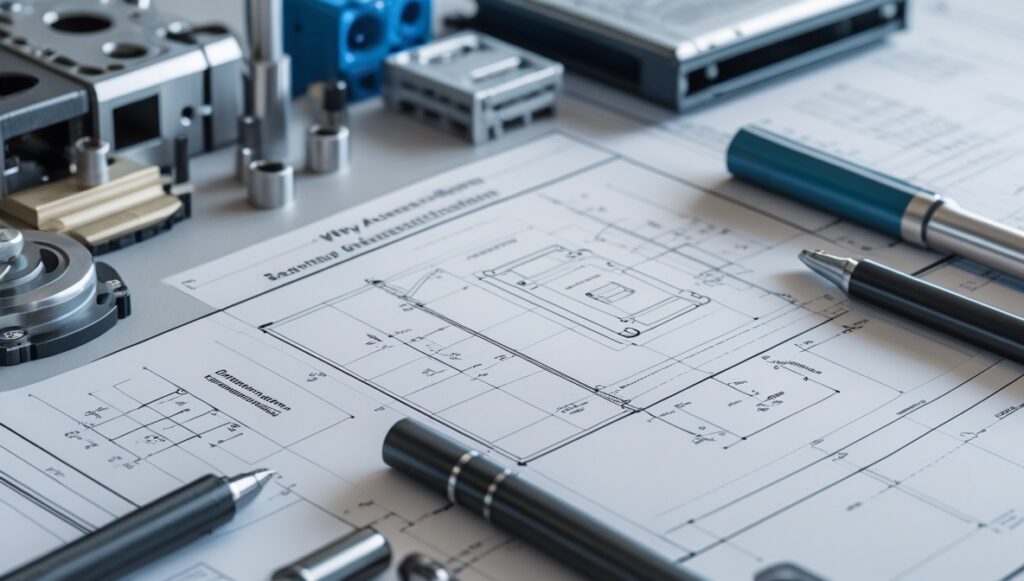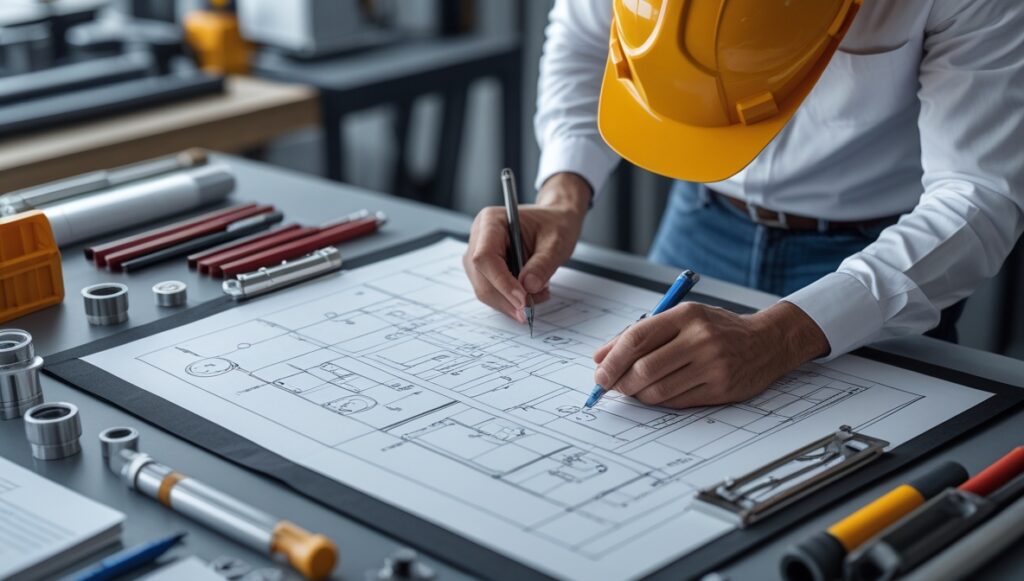You’ve poured time, capital, and genius into designing the perfect product. But without a precise blueprint, that brilliant design can crumble into costly errors once it hits the manufacturing floor.
The true unsung hero of the product lifecycle is accurate engineering documentation. This isn’t just paper—it’s the universal language that connects design, procurement, and production. It’s the difference between seamless production and a budget-breaking fiasco.
This guide explores the three pillars of effective documentation and shows you exactly why they are non-negotiable for quality control and timely delivery.
Why Accurate Engineering Documentation Prevents Manufacturing Chaos

Many design teams focus solely on the 3D model, but they underestimate how crucial the downstream documentation is. The core mission of Accurate Engineering Documentation is eliminating ambiguity. When you remove questions, you remove mistakes, delays, and cost overruns.
The Foundation: Eliminating Ambiguity
Every member of your supply chain—from the raw material supplier to the final assembly technician—relies on your documentation. If a technical drawing dimension is vague or a component number is wrong, the entire production run stalls. Clearly, investing in high-quality documentation is not an expense; it’s an insurance policy for your design’s success.
Achieving Seamless Production with Technical Data
Seamless production means parts fit perfectly on the first try and processes run efficiently. Furthermore, this requires more than just a CAD file; it demands highly structured data that dictates every material, dimension, tolerance, and process step. Therefore, always treat your documentation as a finalized, audited product itself.
Pillar 1: The Essential Role of Bills of Materials (BOMs)
The Bill of Materials (BOM) is the definitive shopping list for your product. It’s arguably the most important document for the procurement and finance teams. An accurate, well-structured BOM ensures you order the right parts, in the correct quantities, at the best cost.
Controlling Costs and Inventory with Accurate BOMs
Incorrect or outdated BOMs directly impact your bottom line. Firstly, using the wrong revision of a BOM can lead to ordering obsolete or incorrect parts, resulting in scrap and delays. Secondly, a robust BOM clearly defines vendor part numbers and material specifications, giving your purchasing team the leverage they need to negotiate better prices and manage inventory efficiently. Consequently, a small error here can multiply into massive manufacturing costs.
Pillar 2: Technical Drawings: The Language of the Machine Shop
While a 3D model shows geometry, Technical Drawings communicate critical, non-geometric information to the manufacturing team. This includes things like surface finish, acceptable tolerances, and material treatments.
Communicating Critical Tolerances and Specifications
Technical drawings utilize GD&T (Geometric Dimensioning and Tolerancing) to define the maximum permissible variations for a part. This is vital for Design for Manufacturability (DFM). When you specify tolerances correctly, you guarantee that mating parts will fit during assembly. Poorly defined drawings, conversely, force machinists to guess, leading directly to high rejection rates and time-consuming re-work. Therefore, always prioritize clarity and precision in your drawing standards.
Pillar 3: Assembly Instructions and Quality Control
Finally, comprehensive Assembly Instructions are the final step in ensuring your product is put together consistently and correctly, every time. These documents serve as the training manual and the standard for quality control.
Ensuring Product Consistency and Reducing Assembly Errors
Detailed, step-by-step assembly instructions reduce dependence on tribal knowledge and minimize human error. These documents should often include visuals, torque specifications, and clear sequential steps. When production workers follow a standardized process, the finished products exhibit high consistency and meet the intended quality benchmarks. Furthermore, these instructions become the reference point for auditing and troubleshooting, drastically simplifying the process of identifying a defect’s root cause.
Conclusion

The path to seamless production isn’t paved with hopes and prayers—it’s built on the solid foundation of Accurate Engineering Documentation. By prioritizing and meticulously maintaining your Bills of Materials, Technical Drawings, and Assembly Instructions, you equip your entire product lifecycle with the clarity needed for success. Consequently, you save money, reduce time-to-market, and consistently deliver a high-quality product that matches your initial design vision.

